What Bird Flies The Fastest? The peregrine falcon is the fastest bird, reaching speeds of over 240 mph during its hunting dives, as reported by flyermedia.net. Understanding avian speed involves exploring evolutionary adaptations and ecological pressures, vital for anyone fascinated by aviation and the natural world. Discover fascinating facts about bird flight and explore opportunities in the aviation field with flyermedia.net, including aerospace innovations, aerodynamics principles, and flight dynamics.
1. How Fast Can Birds Fly Compared to Humans?
Birds, through millions of years of evolution, have become masters of aerial speed. They exhibit remarkable flight capabilities that significantly surpass human attempts at unassisted flight.
- Birds: The fastest bird, the Peregrine Falcon, can reach speeds exceeding 240 mph (386 kph) during its hunting dives. Other birds like the White-Throated Needletail Swift can achieve speeds of up to 105 mph (169 kph) in level flight.
- Humans: Without technological assistance, humans are grounded. In skydiving or with wingsuits, the maximum speed humans can reach is approximately 120 mph (193 kph), which is far below the speeds achieved by birds. Commercial airplanes typically cruise at around 575 mph (925 kph), while fighter jets can exceed 1,500 mph (2,414 kph).
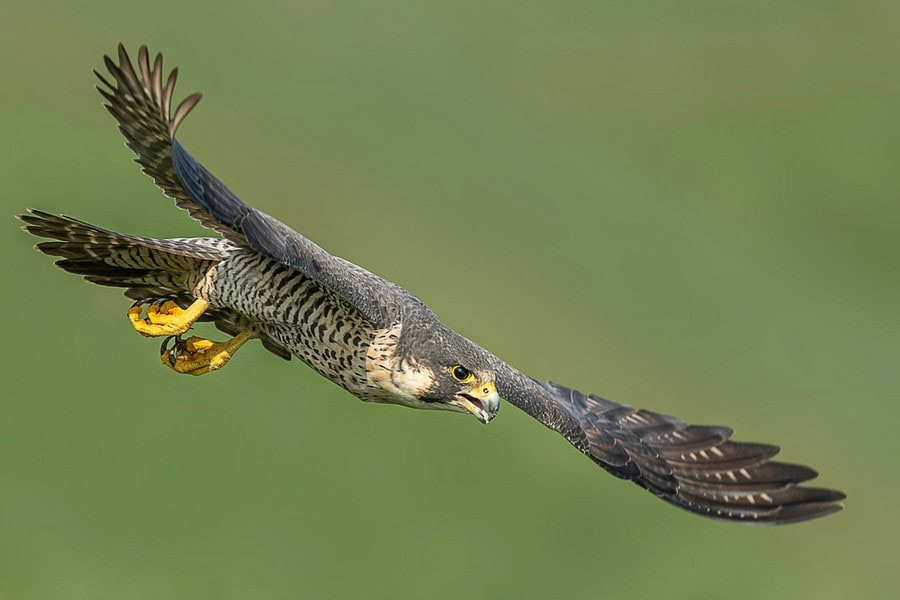 Peregrine Falcon Hunting Dive
Peregrine Falcon Hunting Dive
This disparity in speed highlights the evolutionary advantages birds have developed for flight, including specialized wing structures, lightweight bones, and efficient respiratory systems. Birds’ ability to achieve such speeds is a testament to the natural selection pressures that have refined their aerial capabilities over millennia, as detailed by experts at flyermedia.net. For more detailed information, visit flyermedia.net to explore aerodynamics and avian flight dynamics.
2. What Evolutionary Adaptations Allow Birds to Fly So Fast?
Birds’ exceptional flight capabilities are a product of evolutionary adaptations that enhance their aerodynamic efficiency and power output. These adaptations are crucial for achieving high speeds and sustained flight.
Key Evolutionary Adaptations:
- Aerodynamic Wing Shape: Fast-flying birds often have long, pointed wings that reduce air resistance. The shape minimizes drag, allowing for more efficient and rapid movement through the air.
- Lightweight Bone Structure: Birds have evolved hollow bones that reduce their overall weight. This skeletal adaptation makes it easier for birds to generate lift and achieve higher speeds.
- Powerful Muscles: Birds possess highly developed pectoral muscles, which are responsible for powering wing movements. Strong muscles enable birds to generate the necessary force for rapid and sustained flight.
- Efficient Respiratory System: Birds have a unique respiratory system that allows for a continuous flow of oxygen. This system supports the high metabolism required for sustained flight, providing the necessary energy for fast flying.
- Specialized Feathers: Feathers are specialized for flight, providing lift and reducing drag. Their structure and arrangement contribute significantly to a bird’s aerodynamic efficiency.
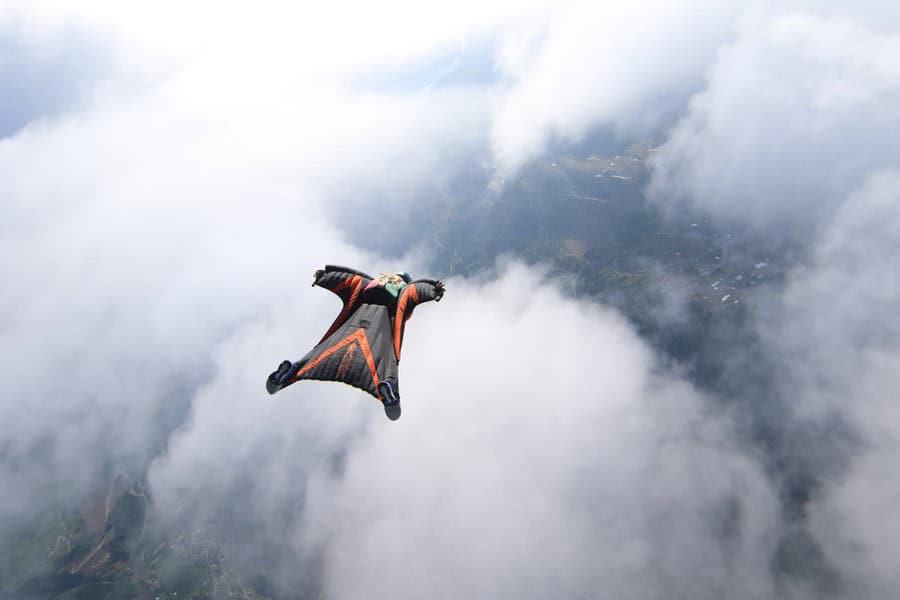 Bird Wing Aerodynamics
Bird Wing Aerodynamics
These adaptations have been refined over millions of years through natural selection, allowing birds to excel in their aerial environments. For instance, research from Embry-Riddle Aeronautical University highlights the importance of wing morphology in determining flight speed, stating that birds with longer, narrower wings are generally faster. To explore these concepts further, visit flyermedia.net for in-depth information on avian evolution and flight mechanics.
3. Which Bird Holds the Record for the Fastest Dive Speed?
The Peregrine Falcon holds the record for the fastest dive speed, making it the fastest animal on Earth. During its hunting stoop, it can reach speeds exceeding 240 mph (386 kph).
Key Characteristics of the Peregrine Falcon:
- Hunting Stoop: The Peregrine Falcon gains altitude and then plummets toward its prey in a high-speed dive. This stoop is not just fast but also precise.
- Aerodynamic Body: Its sleek, aerodynamic body reduces air resistance, allowing it to achieve incredible speeds.
- Strong Heart: A powerful heart enables the Peregrine Falcon to withstand the physiological demands of high-speed dives, ensuring sufficient oxygen supply to muscles.
- Keen Eyesight: Exceptional eyesight allows the Peregrine Falcon to spot prey from great distances, ensuring accuracy during high-speed pursuits.
- Specialized Nostrils: Specialized nostrils control airflow during dives, preventing lung damage from the extreme pressure.
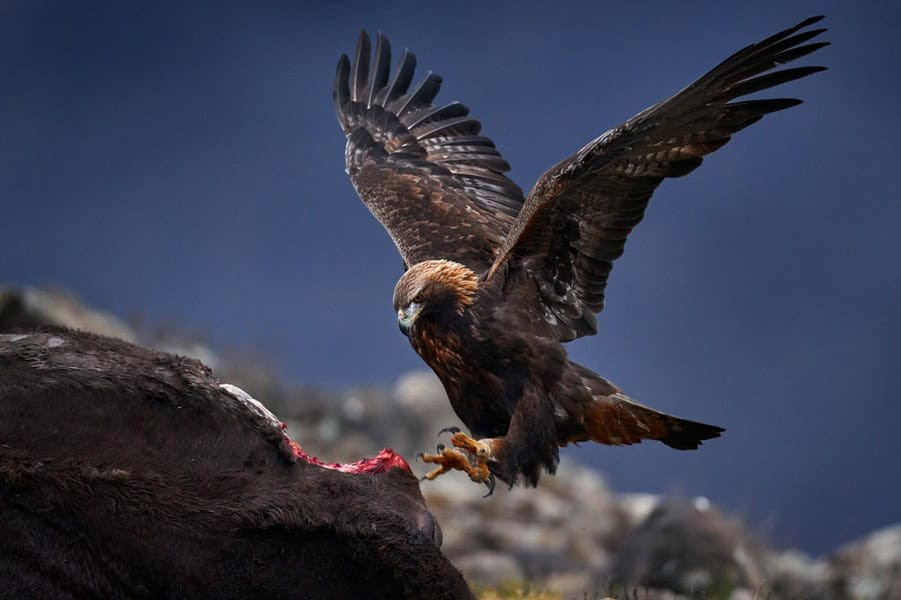 Peregrine Falcon in Flight
Peregrine Falcon in Flight
The Peregrine Falcon’s adaptations make it an apex predator in the avian world. According to the FAA, understanding the flight dynamics of birds like the Peregrine Falcon can provide insights into improving aircraft design. Visit flyermedia.net for more information on aviation technology and wildlife adaptations.
4. What Bird is Known for Being the Fastest in Level Flight?
The White-Throated Needletail Swift is renowned as one of the fastest birds in level flight, capable of reaching speeds up to 105 mph (169 kph). This bird spends most of its life on the wing.
Key Features of the White-Throated Needletail Swift:
- Sustained Flight: This swift is adapted for continuous flight, feeding on insects caught mid-air.
- Aerodynamic Body: Its robust, cigar-shaped body and long, curved wings are designed for rapid, sustained flight, reducing drag and optimizing lift.
- Habitat: Found in rocky hills and forests in Asia and Australia, it undertakes long migrations between breeding and wintering grounds, demonstrating its endurance and flight capabilities.
- Unique Behavior: Needletails can even sleep while flying, only stopping to breed and raise their young.
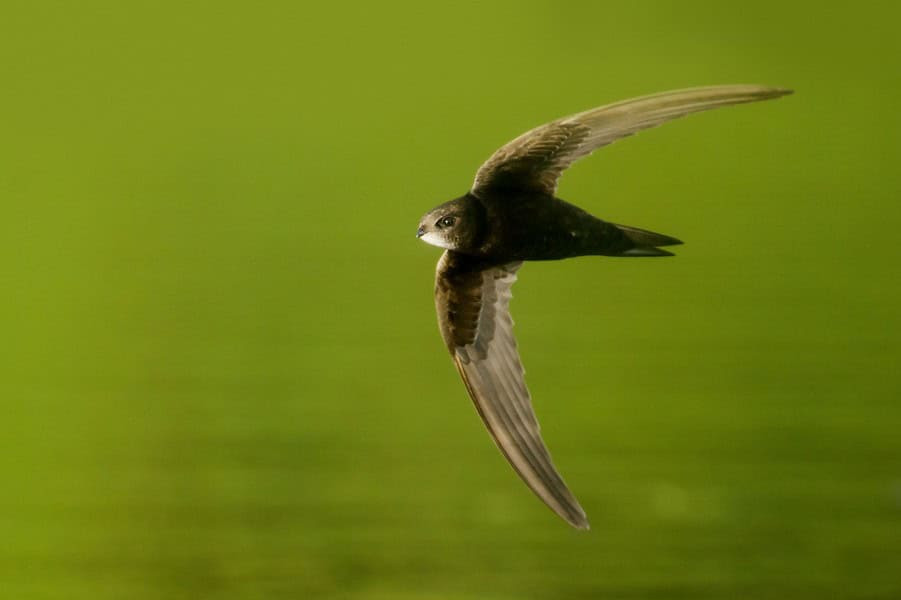 White-Throated Needletail Swift
White-Throated Needletail Swift
The White-Throated Needletail Swift exemplifies the pinnacle of avian adaptation for continuous, high-speed flight. According to ornithologists at IATA, the swift’s flight capabilities are a marvel of natural engineering. Explore more fascinating bird facts at flyermedia.net.
5. How Do Birds Like Eagles Utilize Their Speed for Hunting?
Eagles are among the largest and most powerful birds of prey, and they utilize their speed and agility to hunt effectively. Different species employ various techniques to capture their prey.
Hunting Strategies of Eagles:
- Golden Eagle: This eagle can reach speeds up to 200 mph (322 kph) during hunting dives. With a wingspan of up to 7 feet (2.1 meters), it targets mammals like rabbits and marmots.
- Bald Eagle: While typically flying at slower speeds, the Bald Eagle can reach up to 99 mph (160 kph) when diving for fish. Its large wingspan, up to 8 feet (2.4 meters), allows it to soar effortlessly and scan for prey.
- Hunting Techniques: Eagles use their sharp talons to capture and dismember prey. Golden Eagles can exert over 400 pounds (181 kg) of pressure per square inch with their talons.
- Vision: Eagles possess excellent vision, allowing them to spot prey from great distances and maintain focus during high-speed pursuits.
 Bald Eagle in Flight
Bald Eagle in Flight
Eagles’ hunting prowess is a combination of speed, strength, and keen sensory perception. According to the U.S. Fish and Wildlife Service, understanding eagle hunting behaviors is crucial for conservation efforts. Discover more about these magnificent birds at flyermedia.net.
6. What Other Birds Rank Among the Fastest Fliers and What Are Their Speeds?
Beyond the Peregrine Falcon and the White-Throated Needletail Swift, several other birds boast impressive flight speeds.
Top 15 Fastest Birds and Their Speeds:
| Rank | Bird | Top Speed (mph) | Top Speed (kph) |
|---|---|---|---|
| 1 | Peregrine Falcon | 240 | 386 |
| 2 | Golden Eagle | 200 | 322 |
| 3 | White-Throated Needletail Swift | 105 | 169 |
| 4 | Eurasian Hobby | 100 | 160 |
| 5 | Bald Eagle | 99 | 160 |
| 6 | Frigatebird | 95 | 153 |
| 7 | Rock Dove (Pigeon) | 93 | 150 |
| 8 | Gyrfalcon | 90 | 145 |
| 9 | Spur-Winged Goose | 88 | 142 |
| 10 | Red-Breasted Merganser | 81 | 130 |
| 11 | Grey-Headed Albatross | 79 | 127 |
| 12 | Canvasback | 73 | 117 |
| 13 | Mallard | 65 | 105 |
| 14 | Anna’s Hummingbird | 61 | 98 |
| 15 | Great Snipe | 60 | 97 |
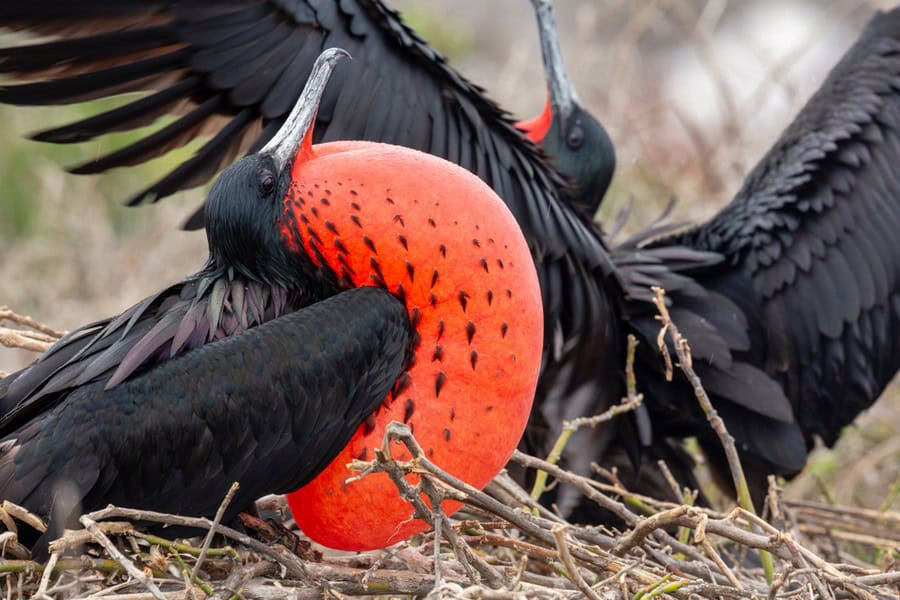 Various Fast Flying Birds
Various Fast Flying Birds
This table illustrates the diverse range of speeds achieved by different bird species. According to avian experts, understanding these speeds helps in conservation efforts and ecosystem management. Learn more about bird conservation at flyermedia.net.
7. How Does Wingspan Affect a Bird’s Flight Speed?
Wingspan plays a crucial role in a bird’s flight speed and overall flight efficiency. Different wingspans offer distinct advantages depending on the bird’s lifestyle and ecological niche.
Impact of Wingspan on Flight Speed:
- Larger Wingspan: Birds with larger wingspans, such as albatrosses and eagles, excel at soaring and gliding. The increased surface area allows them to generate more lift, enabling them to cover vast distances with minimal energy expenditure.
- Smaller Wingspan: Birds with smaller wingspans, like falcons and swifts, are adapted for rapid, agile flight. Their smaller wings reduce drag and allow for quick bursts of speed and maneuverability.
- Aspect Ratio: The aspect ratio (the ratio of wingspan to wing area) is also significant. High aspect ratio wings (long and narrow) are efficient for long-distance soaring, while low aspect ratio wings (short and broad) provide better maneuverability.
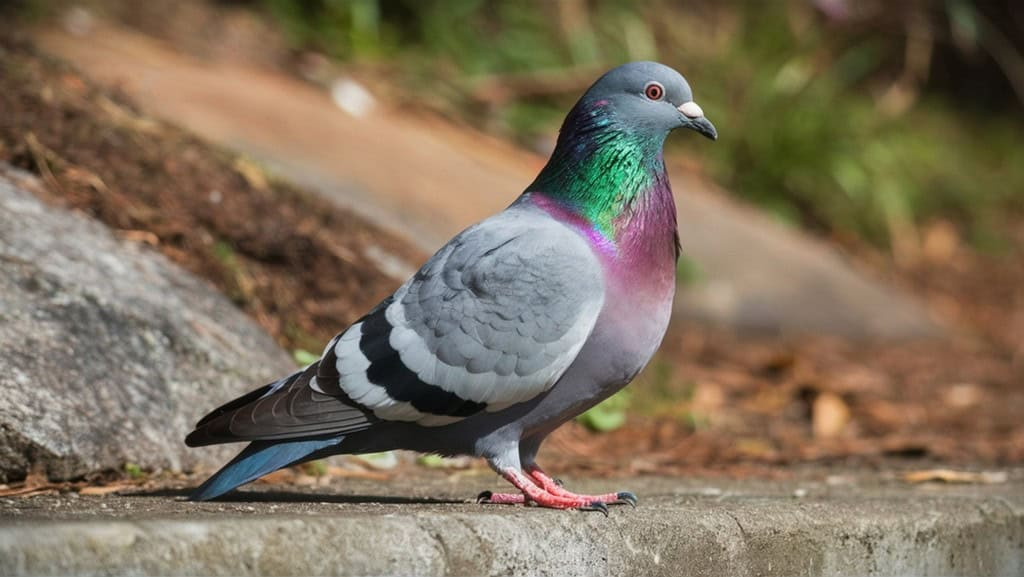 Bird Wingspan Comparison
Bird Wingspan Comparison
The relationship between wingspan and flight speed is a complex interplay of aerodynamics and evolutionary adaptation. Studies by the National Audubon Society emphasize the importance of wingspan in understanding bird flight capabilities. Discover more about avian aerodynamics at flyermedia.net.
8. Do Migratory Birds Rely on Speed to Complete Their Journeys?
Migratory birds often rely on speed to efficiently complete their long journeys, navigating across continents and oceans. Speed is a critical factor in reducing travel time and minimizing exposure to predators and harsh weather conditions.
Role of Speed in Bird Migration:
- Distance Covered: Birds like the Great Snipe can fly non-stop over 4,200 miles (6,760 kilometers) from northern Europe to sub-Saharan Africa at speeds around 60 mph (97 kph).
- Energy Efficiency: Speed helps reduce the overall energy expenditure during migration. By flying faster, birds can reach their destination quicker, reducing the need for prolonged feeding stops.
- Predator Avoidance: Rapid migration reduces the time birds are exposed to predators along their migratory routes.
- Weather Conditions: Speed allows birds to avoid adverse weather conditions, such as storms and strong winds, which can impede their progress and deplete their energy reserves.
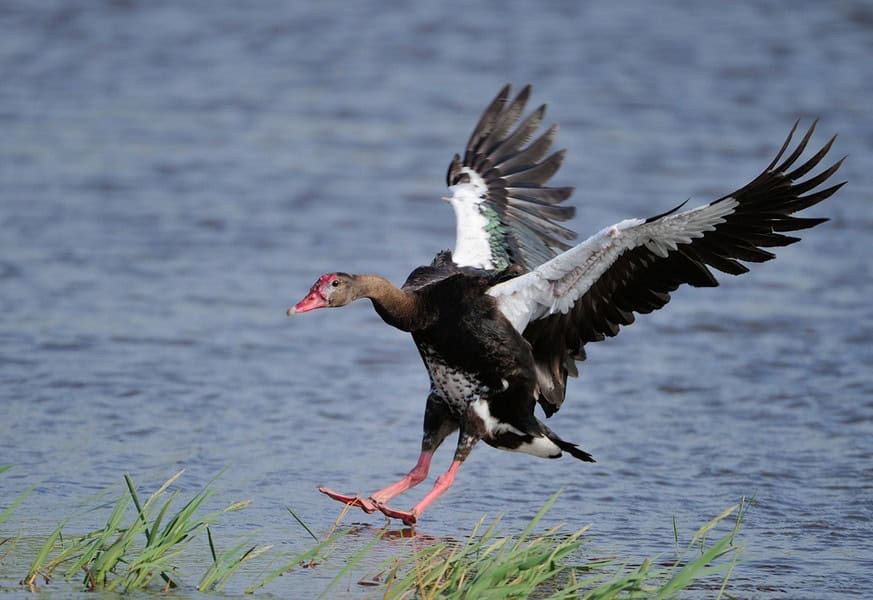 Migratory Bird Routes
Migratory Bird Routes
Migration is a demanding feat, and speed is a key adaptation that enables birds to succeed. Research from BirdLife International highlights the importance of understanding migration patterns for conservation. Explore bird migration and conservation efforts at flyermedia.net.
9. How Does a Hummingbird’s Flight Speed Compare to Other Birds?
Hummingbirds are unique in the avian world due to their ability to hover, fly backward, and perform intricate aerial maneuvers. While not the fastest in sustained flight, their agility and burst speeds are remarkable.
Hummingbird Flight Characteristics:
- Anna’s Hummingbird: During courtship displays, males climb up to 130 feet (40 meters) before diving toward the ground, reaching speeds of 61 mph (98 kph).
- Wing Beat Frequency: Hummingbirds can beat their wings up to 80 times per second, enabling them to hover and maneuver with precision.
- Agility: Their flight is characterized by exceptional agility, allowing them to feed on nectar from flowers while hovering in place.
- Specialized Morphology: Hummingbirds have evolved unique shoulder joints that allow their wings to rotate almost 180 degrees, contributing to their flight capabilities.
 Anna's Hummingbird Hovering
Anna's Hummingbird Hovering
While their top speed is not as high as that of falcons or swifts, hummingbirds’ flight capabilities are a marvel of natural engineering. According to the Cornell Lab of Ornithology, studying hummingbird flight provides insights into biomechanics and aerodynamics. Discover more about hummingbird flight at flyermedia.net.
10. Were Prehistoric Birds Faster Than Modern Birds?
The question of whether prehistoric birds were faster than modern birds is a topic of ongoing scientific debate. While large ancient birds were impressive in size, evidence suggests they were likely not as fast as modern raptors.
Considerations on Prehistoric Bird Flight:
- Skeletal Features: Researchers compare the skeletal features of prehistoric birds to those of modern birds with known speeds to estimate their flight capabilities.
- Computer Modeling: Paleontologists use computer modeling to recreate possible flight patterns, considering factors such as weight, wingspan, and estimated muscle mass.
- Adaptations: Modern birds have evolved specialized wing shapes, hollow bones, and strong breast muscles that enhance their speed. Ancient giants lacked these refinements.
- Size and Weight: Large wings and heavy bones generally reduce top speeds, suggesting that prehistoric birds were built for stable, sustained flight rather than speed.
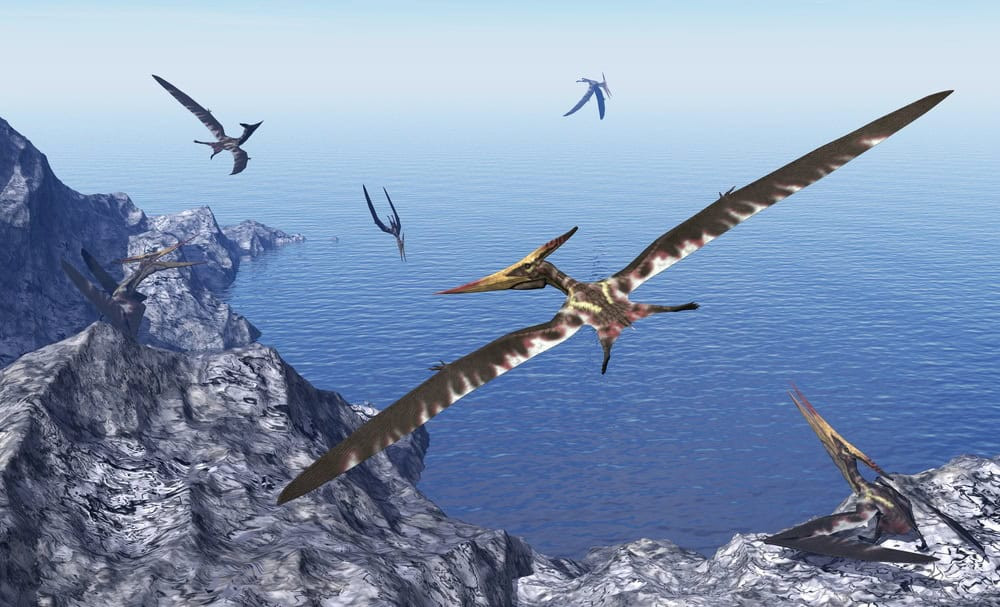 Prehistoric Bird Reconstruction
Prehistoric Bird Reconstruction
The consensus among paleontologists is that prehistoric birds, while impressive, likely did not exceed the speeds seen in living raptors due to differences in body structure and aerodynamic adaptations. Explore more about prehistoric avian species at flyermedia.net.
FAQ: Frequently Asked Questions About Bird Flight Speed
1. What is the fastest speed ever recorded for a bird in flight?
The fastest speed ever recorded for a bird in flight is over 240 mph (386 kph), achieved by the Peregrine Falcon during its hunting dive.
2. Which bird is the fastest in level flight?
The White-Throated Needletail Swift is one of the fastest birds in level flight, reaching speeds up to 105 mph (169 kph).
3. How does wingspan affect a bird’s flight speed?
Larger wingspans are beneficial for soaring and gliding, while smaller wingspans are better for rapid, agile flight.
4. Do migratory birds rely on speed to complete their journeys?
Yes, migratory birds often rely on speed to reduce travel time, minimize exposure to predators, and avoid harsh weather conditions.
5. How does a hummingbird’s flight speed compare to other birds?
Hummingbirds are not the fastest in sustained flight, but their agility and burst speeds are remarkable, with males reaching 61 mph (98 kph) during courtship dives.
6. Were prehistoric birds faster than modern birds?
Most evidence suggests that prehistoric birds were not as fast as modern raptors due to differences in body structure and aerodynamic adaptations.
7. What adaptations allow the Peregrine Falcon to dive at such high speeds?
The Peregrine Falcon has an aerodynamic body, strong heart, keen eyesight, and specialized nostrils to control airflow during dives.
8. Why do some birds need to fly so fast?
Birds need to fly fast for hunting, escaping predators, migrating long distances, and competing for resources.
9. How do scientists measure the speed of birds in flight?
Scientists use radar technology, GPS tracking, and high-speed cameras to measure the speed of birds in flight.
10. What is the role of feathers in a bird’s flight speed?
Feathers provide lift and reduce drag, contributing significantly to a bird’s aerodynamic efficiency and flight speed.
Understanding avian speed is crucial for those interested in aviation and the natural world. Whether you are an aspiring pilot, an aviation enthusiast, or a frequent traveler, flyermedia.net offers a wealth of information to enhance your knowledge and appreciation of flight.
Explore Aviation Further with flyermedia.net
Ready to take your interest in aviation to new heights? Visit flyermedia.net for comprehensive resources on flight training, aviation news, and career opportunities. Whether you’re dreaming of becoming a pilot or simply want to stay informed about the latest trends in the aviation industry, flyermedia.net has everything you need.
Discover More:
- Flight Training: Find a list of the most reputable flight training schools in the United States.
- Aviation News: Stay up-to-date with the latest news and developments in the aviation industry.
- Career Opportunities: Explore the various job roles and requirements for employment in the aviation field.
Contact Information:
- Address: 600 S Clyde Morris Blvd, Daytona Beach, FL 32114, United States
- Phone: +1 (386) 226-6000
- Website: flyermedia.net
Take the next step in your aviation journey today. Visit flyermedia.net and discover the world of flight!